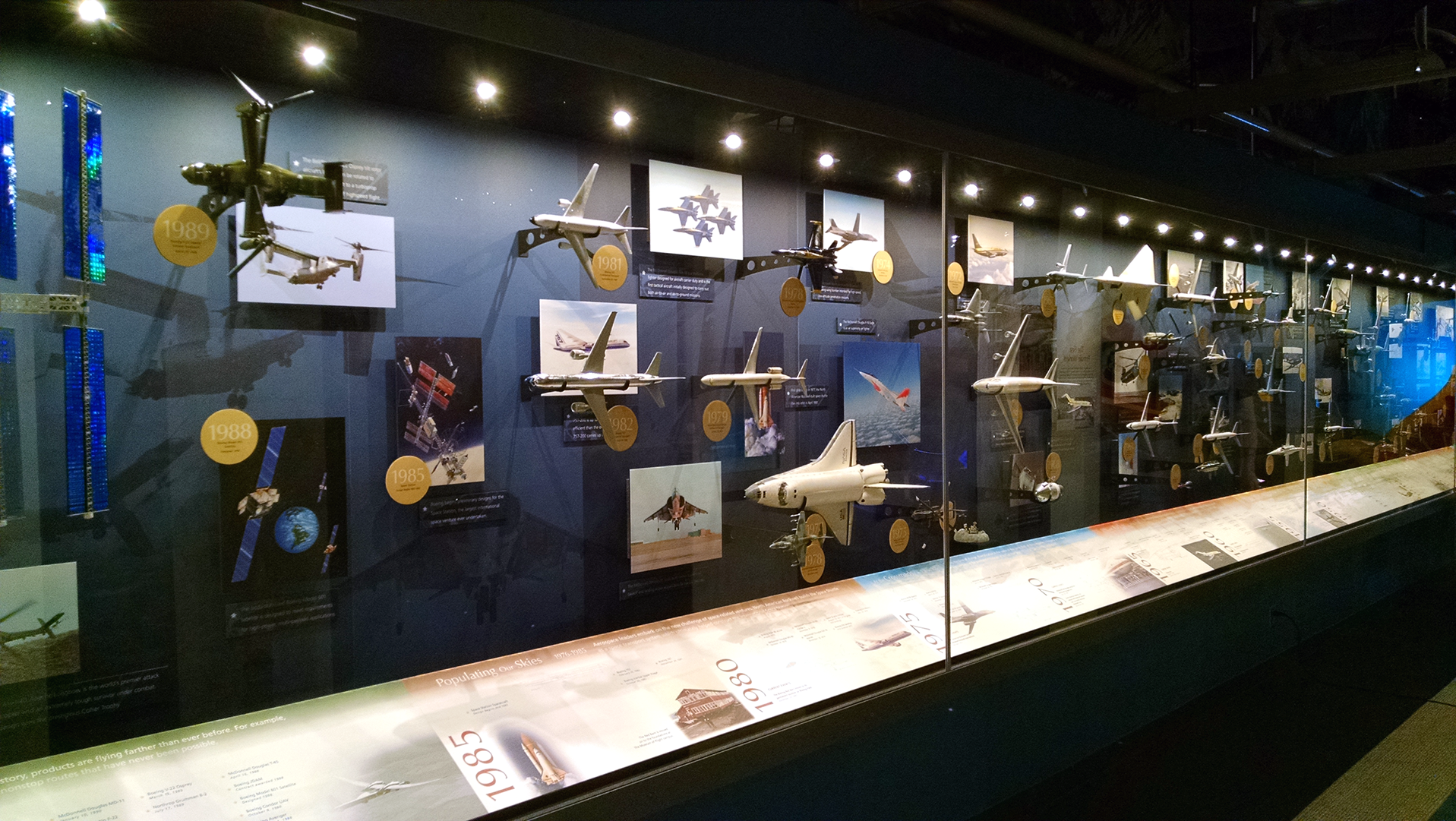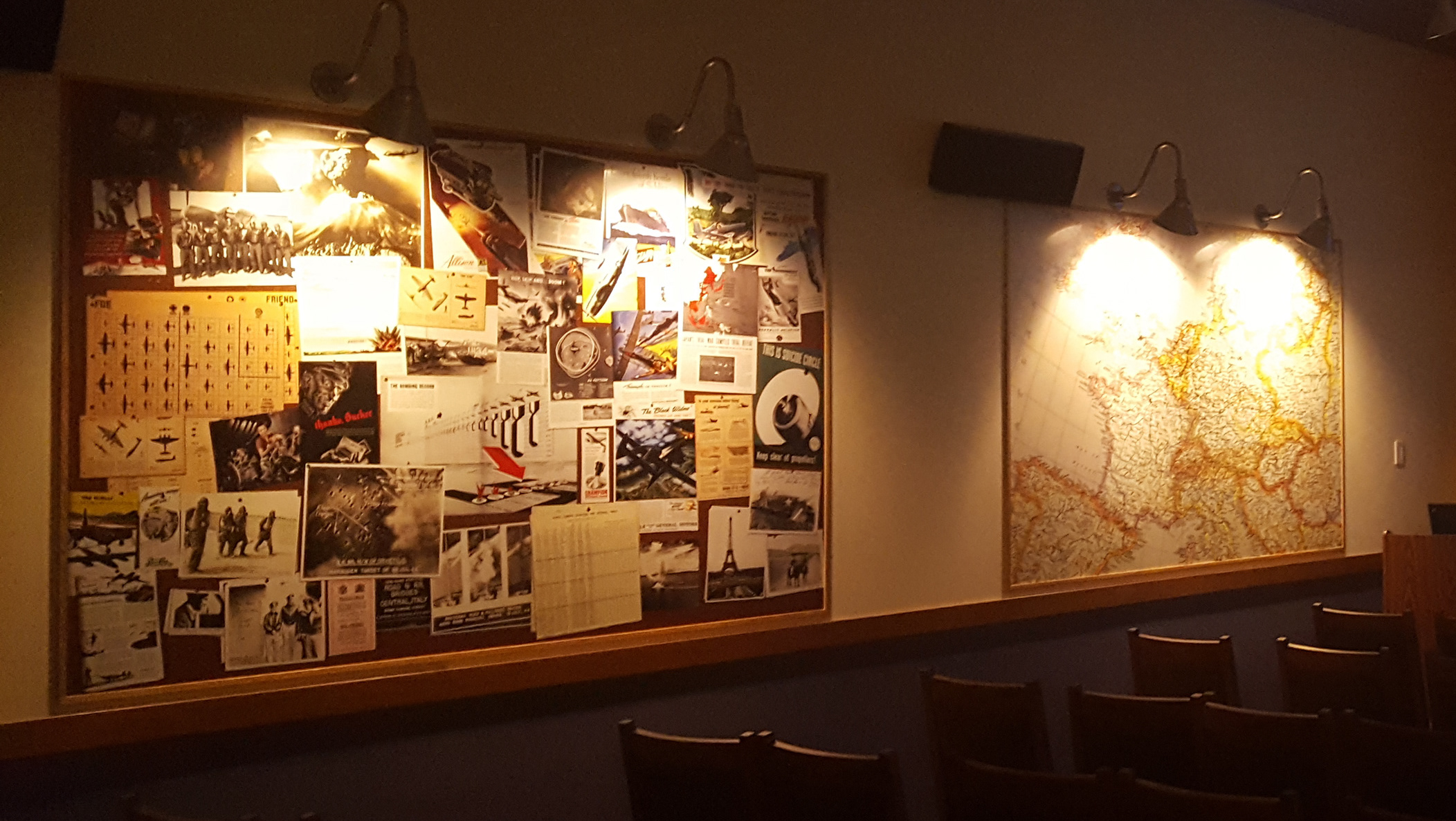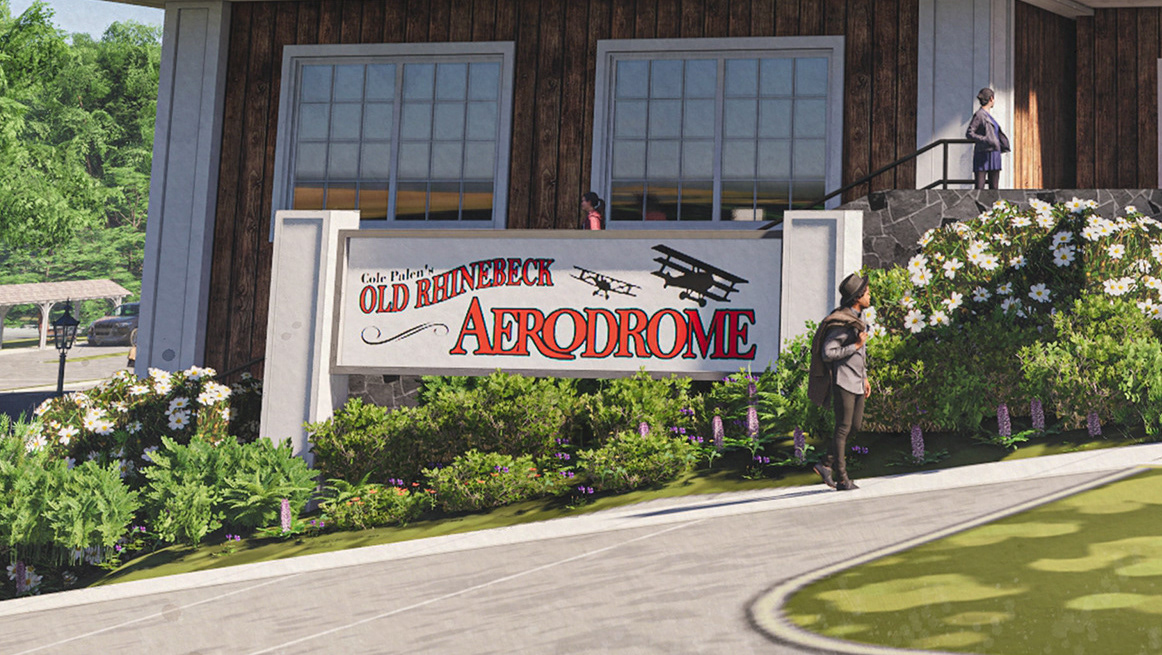This 15,000 square foot exhibit exhibit takes an in-depth look at the many ways Shuttle astronauts trained for their missions. The centerpiece of the exhibit is NASA's space shuttle trainer. The exhibit includes various interactive educational sections that tell the broader story of how the Space Shuttle program and the International Space Station have helped us understand how to live and work in space and what the future of spaceflight could look like.
The exhibit was designed and developed by the Museum of Flight Exhibits team.
Fabrication was done by the great folks at Pacific Studios.
The Full Fuselage Trainer (FFT) at the Johnson Space Center.
Due to its immense size the trainer had to be flown to the museum in sections. The nose section was the first to arrive.
A scale model of a space shuttle that has been modified to match the overall dimensions of the FFT for use in a site model of the gallery.
2D elevations used for planning placement of ephemera and content with the exhibit developers.
Furniture inventory from a preliminary bid package.
Furniture inventory from a preliminary bid package.
SketchUp rendering showing initial placement of exhibit elements along the right side of the FFT.
SketchUp rendering showing initial placement of exhibit elements along the right side of the FFT.
Drawing from a bid package for a large scale model of the space shuttle. The video screen in the base shows footage taken from cameras placed on the exterior of the shuttle during launch.
SketchUp rendering showing exhibit elements along the right side of the FFT.
Case details from bid package.
Drawing from bid package .
Rendered version of a display case and video display that discuss classroom training of shuttle astronauts.
Completed case in exhibit.
Preliminary case design studies.
This case houses one of the seats from the shuttle trainer.
Rocket engine stand designed in collaboration with museum fabricators.
This lower section of the FFT was refashioned into a small theater area that also displayed ephemera from local astronauts that were lost in the Challenger and Columbia accidents.
Design details from bid package.
Design details from bid package for portals that help define various sections of the exhibit.
Preliminary design for space departure/arrival board. The large video screen shows a listing of upcoming launches and returning flights. This area also served as a gathering place for public programs.
SketchUp renders showing major casework and furniture in context.
"Orbit Tables". These tables were designed to allow a flexible systems of floor displays that could be moved out of the way for special events within the gallery.
Orbit tables in fabrication by Pacific Studios.
This orbit table incorporated a gravity well hands on interactive.
Rendering of space station elements used in graphic panels. The same sketchup files were also used to help create the 3D prints.
A hands on activity that encourages visitors to create their own space station using 3D printed components.
An interactive activity that teaches how various medical issues are treated during a typical shuttle mission.
The first section of the exhibit teaches the fundamentals of traveling in space.
The FFT was used extensively to train emergency egress procedures. This section features the tools of the trade and oral histories with the folks at JSC that trained the astronauts.
This touch screen interactive shows visitors the inner workings of the space shuttle system. It features animated cutaway models of the various structures and subassemblies.
This case includes vintage prototype models of the space shuttle loaned from the Boeing Archives. The drawers can be opened to reveal reproductions of archival drawings of early shuttle proposals.
A garment case featuring the flight suit Brian Binnie wore during his flights on SpaceShipOne.
Video screens are inset into these portals with regularly updated segments about current space news.
Each screen is relevant to the content nearby in the exhibit.
Artifacts within cases are displayed to give the impression of floating in microgravity.
A flown soyuz capsule.
A hands on interactive helps illustrate the differences between how solid and liquid rockets work.
This touch screen interactive shows visitors the inner workings of the space shuttle system. It features animated cutaway models of the various structures and subassemblies.
This video interactive shows the various elements of a typical shuttle mission. The large screen shows an animation of the shuttle in flight while the smaller screens are synced to show activities on the ground and in the cockpit.
This section explains the basics physics involved in spaceflight with emphasis on orbital physics.
At left is a hands on interactive that lets visitors launch a bottle rocket to varying heights.
At right is a rocket sculpture that is part of a display on the history of model rocketry that includes vintage and recent award winning rockets.









